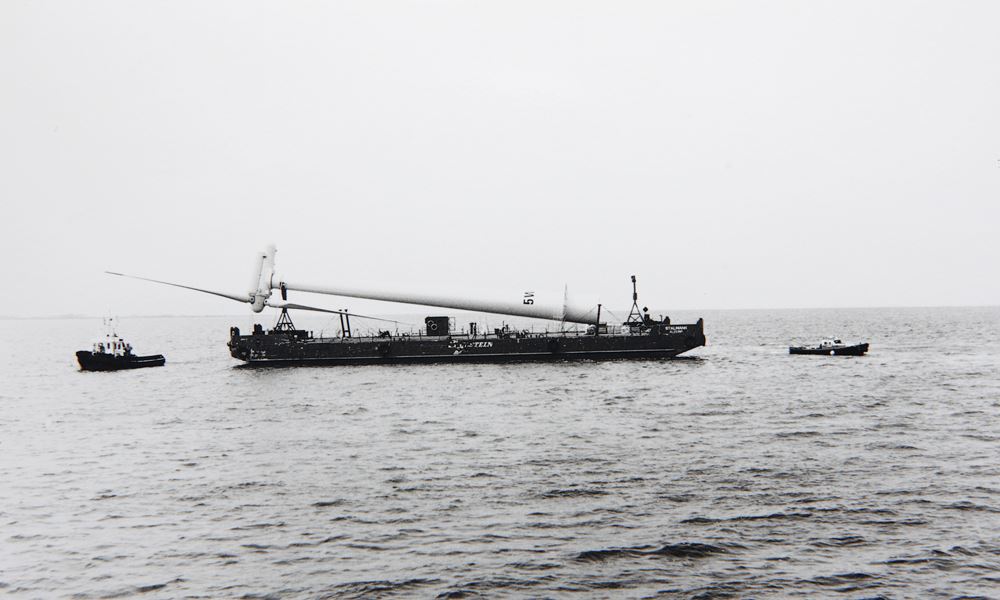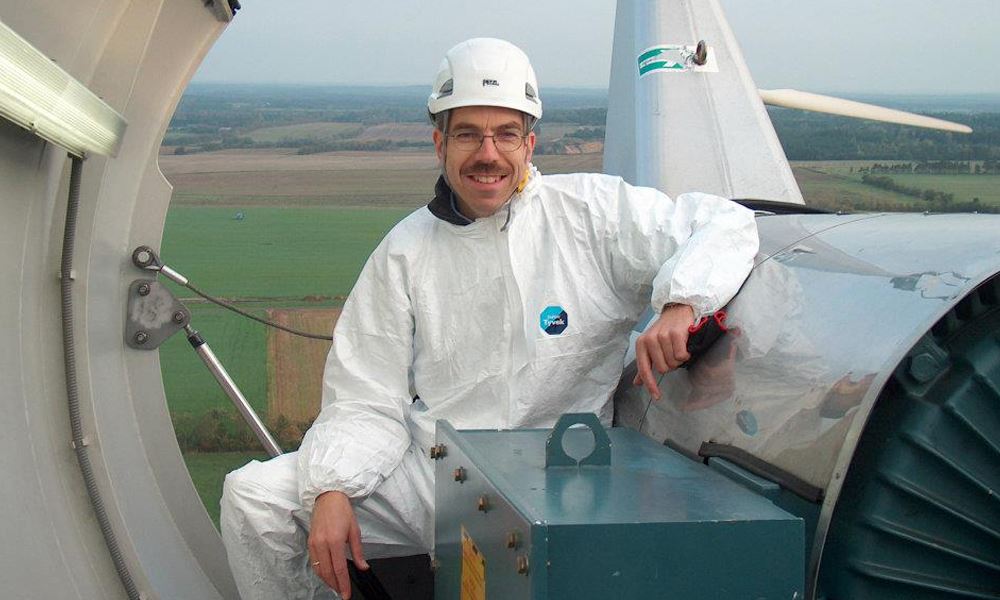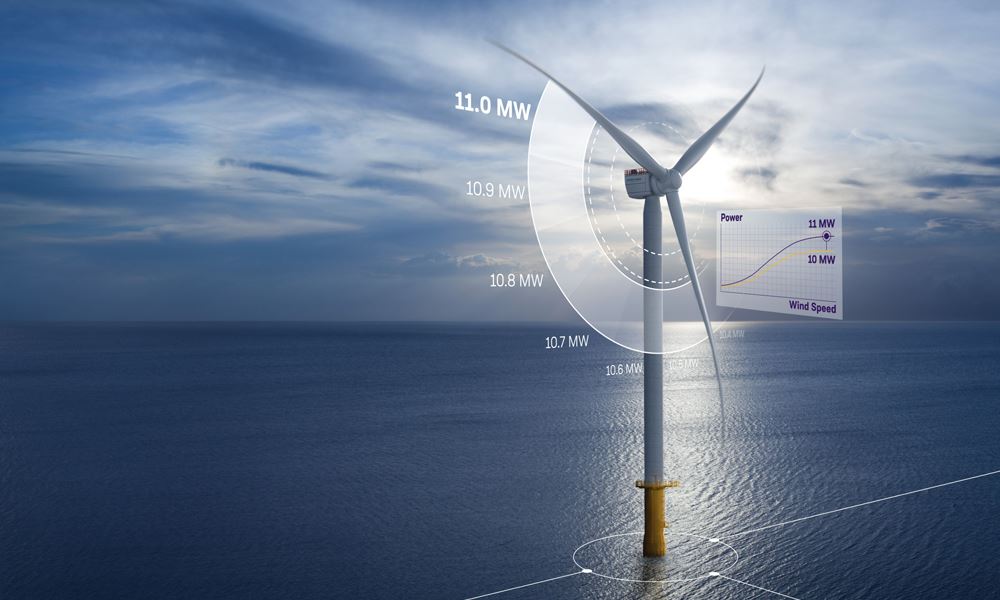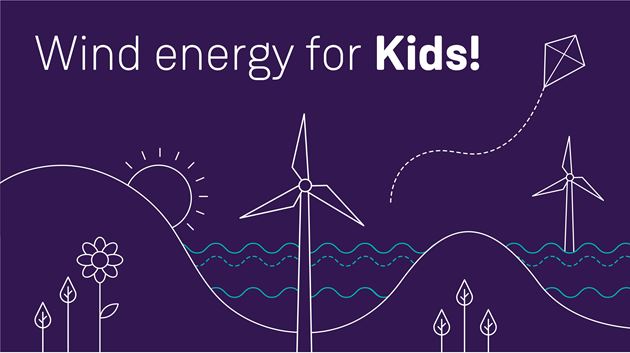
“We are seeing the beginning of a new adventure. We believed in it and changed the game"
Brande / 21 May 2020
Anders J. Jensen, Project Manager for Vindeby
The wind industry was formed by pioneers. One of them is Anders J. Jensen from Siemens Gamesa, who was there from the very beginning. Particularly, he was instrumental in developing the offshore wind industry from nothing at all to the huge scale we see today throughout the entire world. He told us the story of how the offshore wind industry formed and revealed how he sees Siemens Gamesa having a part to play in pioneering the offshore wind industry…again.
Anders, who is 60 years old today, has had a keen interest in environmental protection and green energy since he was about 13. From building small demo wind turbines on the chimney of his parents’ house to arranging public meetings about renewable energy back in the late 1970’s when the topic was brand new, he has worked with a lot of activities to help provide the push that finally set off the wind industry. In 1982, together with a friend, he built a 4-kilowatt (kW) wind turbine with a 5 meter rotor diameter and a 13 meter hub height which he used for the electrical heating of his own household in the countryside. In 1986, he got a job at wind turbine manufacturing company Bonus Energy A/S – which later became Siemens Gamesa Renewable Energy – a company that was truly pioneering the wind business and where he is still employed. Starting out as Head of Quality, he moved on to positions as Head of “Service Abroad” and Head of Projects, Gearbox Coordinator as well as Proposal Manager in both Brande and Orlando before moving on to a position as Technical Sales Manager/Project Sales Manager leading to his current role as Senior Sales Specialist in the Offshore Business Unit.
In 1989, Anders was among the employees who saw the potential in a great new idea: by placing wind turbines offshore, where the wind flows more generously, wind farms could be scaled up more easily and large coastal cities could be better supplied with electricity.
“The government and we wanted to show it was possible to install and maintain an offshore wind farm project to generate power,” he says about the launch of the 450-kilowatt (kW) wind turbines that the company modified specifically for offshore use.

Over the course of a year, the company carefully developed and tested this new turbine and the first-of-its-kind technology that went into it. For example, onshore turbine nacelles let in outside air to cool their mechanical and electrical systems, but the offshore turbines would be damaged by the salty sea air. The team therefore developed an airtight nacelle that used a heat exchanger to cool the turbine’s machinery. To prevent corrosion, the team installed two dehumidifiers, one in the turbine’s nacelle, the other in its tower.
“Many employees in the company did not believe in the idea of an offshore wind farm,” he says. The doubters pointed to the unknowns of a pilot project: the potentially high installation costs and the difficulty of maintaining the turbines at sea. “I had to convince my colleagues this was possible,” Anders explains. He did that by inviting senior executives to the kickoff meeting, so they could underscore the project’s strategic importance, as well as periodically reminding team members during meetings of the parallels between this project and other breakthrough initiatives that ventured into uncharted territory, such as sending the first person to the moon.
“I told them that there had been other projects that no one could have anticipated 30 years earlier. You never know what’s possible,” he says.
And history proved him right. In fact, Vindeby – the world’s first offshore wind project where 11 of these new 450kW turbines were installed in 1991 – is now widely known as the single project which set off these industry-wide winds of change. In fact, this project has been listed as the 32nd most important project in the world on a list of the top 50 most influential projects of the last 50 years by the Project Management Institute. The list includes projects such as the invention of the internet and the first landing on the moon.
Yet Vindeby lives on. The project’s design, with elements such as the system to protect against corrosion, has remained fundamentally the same as elements used in Siemens Gamesa’s offshore wind turbines to this day - even as their size and power have grown exponentially. While each Vindeby turbine generated 450 kilowatts, today Siemens Gamesa builds turbines as big as 11,000 kilowatts each (11MW) – more than 24 times bigger.
Leading the way forward, the engineers and technicians that pioneered the offshore sector back in 1991, has led Siemens Gamesa to grow into the global leader in offshore power generation with the largest installed base and the largest order book in the industry, and with approximately 55 %* of the market share.
Three decades ago, there was not a single offshore wind power plant in the world. Now, there are more than 120, hereof 58 using turbines from Siemens Gamesa. The largest offshore wind power plant – having passed the ‘wind farm’ moniker to reach industrial power plant sizes exceeding one gigawatt (GW)- can generate enough energy to power more than one million homes. It too also uses using Siemens Gamesa offshore wind turbines.

And as the demand for global electricity is projected to keep increasing, the offshore wind market is still growing strongly.In the worldwide quest for more renewable energy sources, offshore wind power has proven itself to be a major part of the future energy mix.
In fact, the Global Wind Energy Council is expecting 50+ GW of new offshore installations during the next five years. The EU has notably experienced a huge offshore wind power expansion in recent years. According to Wind Europe, Europe now has a total installed offshore wind capacity of more than 22 GW from 5,047 grid-connected wind turbines across 12 countries. 502 of these turbines were connected to the grid in 2019 across 10 projects, bringing an additional capacity of 3,627 MW to the European offshore wind market. As most of the best European onshore sites are developed, offshore wind heralds the next frontier. The rest of the world is running full speed ahead as well, with China on a path of rapid growth. With 2396 MW installed in 2019, the country accounted for 39% of new installations worldwide. Additionally, the US came onboard in 2016 with its first offshore wind park off the east coast state of Rhode Island, and has targets totaling around 10 GW throughout the next five years.
Today, the world has around 29 GW of offshore wind power installed. With Siemens Gamesa having installed over 15 GW of this capacity – including the very first 11 wind turbines at Vindeby, Denmark – the company’s role in kicking off this great adventure cannot be overlooked. With persistence, belief in the cause and a lot of hard work, heroes like Anders made it happen.
Not only do the wind turbines grow rapidly, technologies are also in place to take wind power plants even further offshore and into deeper waters, where better wind resources are available. In order to deploy offshore wind in such deep waters, the industry has been deploying pilot- and pre-commercial scale projects to improve the designs of floating foundations and to establish their costs. Siemens Gamesa has been engaged in these efforts from the very start with pilot floating projects such as Hywind 1 in Norway at 2.3 MW and Hywind 2 in Scotland at 30 MW.
Pairing energy storage systems with an offshore wind project could furthermore significantly increase the utilization rate of the output from an offshore wind project, and energy storage is another area where Siemens Gamesa is investing resources. But that’s not all.
Offshore wind can deliver the bulk power needed to drive the energy transition from fossil fuels entirely. Electrification and the use of renewable energies to supply this electricity is a major part of the green transition. Research shows, however, that around half of the world’s energy consumption cannot be transferred to electricity consumption, but will need to be covered by other sources, among others by liquid and gas fuels for heavy transport such as ships, airplanes, and heavy trucks.

By combining nitrogen with hydrogen to produce ammonia, a hydrogen carrier is created which makes transport less expensive. The resulting ‘green ammonia’ can decarbonize heavy sea-transportation such as using large container ships. Green ammonia can thus become the chemical which converts offshore wind into marine fuel.
The high capacity factors and improving cost-competitiveness of offshore wind mean that it could play an important part in the production of low-carbon hydrogen, and this might very well become the next big offshore adventure.
“Experts from Siemens Gamesa are already contributing to research being carried out in this field, because we have substantial knowledge of how offshore wind turbines could be used for this purpose,” Anders explains.
Global utility and Siemens Gamesa customer Ørsted (the same company who created Vindeby beginning in 1990) has been looking into this and sees it as a stepping stone into a new offshore market. They see moving away from individual offshore wind power plants which are connected to shore simply supplying electricity. They see offshore wind power plants which are connected to more countries, where the power they produce is used for Power to X generation in addition to the expected direct electrification electric vehicles, heat pumps, and the like.
“In the future, we could imagine building enormous offshore wind power plants that are not connected at all to the electrical grid, but where all the electricity generated is transformed to green hydrogen directly at sea,” Anders states without being able to hide the excitement of once again being at the core of pioneering the offshore wind industry. “We are seeing the beginning of a new offshore adventure, and we are in it right from the start, just like we were in 1991. We believed in it when no one else did and we changed the game. We can do that again,” he concludes.
*Market share from Wood Mackenzie, March 2020



